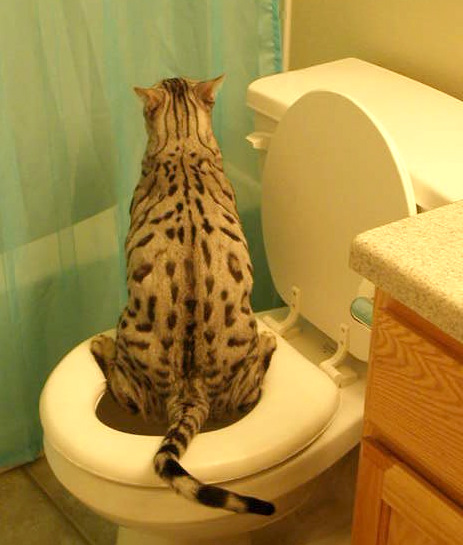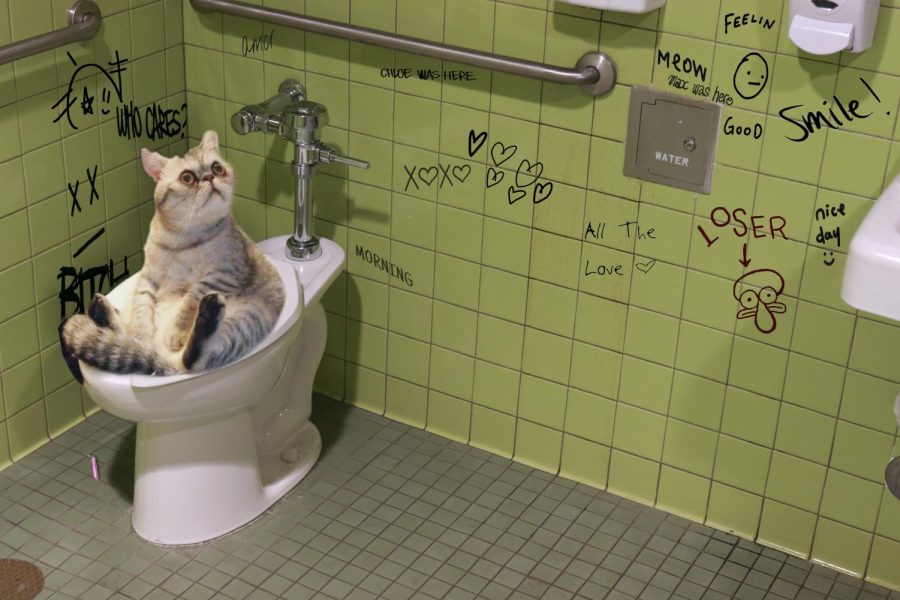We've come across this great article pertaining to Don’t flush cat feces down the toilet below on the net and figured it made good sense to talk about it with you on this page.

Intro
As feline owners, it's necessary to be mindful of how we deal with our feline good friends' waste. While it may seem convenient to flush pet cat poop down the bathroom, this technique can have damaging repercussions for both the atmosphere and human wellness.
Ecological Impact
Flushing feline poop introduces unsafe microorganisms and parasites right into the supply of water, positioning a substantial risk to water communities. These contaminants can adversely influence aquatic life and concession water quality.
Health Risks
In addition to ecological problems, flushing pet cat waste can likewise posture health risks to humans. Feline feces may include Toxoplasma gondii, a parasite that can cause toxoplasmosis-- a potentially severe illness, particularly for expecting females and people with weakened body immune systems.
Alternatives to Flushing
Thankfully, there are much safer and more liable methods to deal with feline poop. Consider the adhering to options:
1. Scoop and Dispose in Trash
One of the most usual method of disposing of cat poop is to scoop it into an eco-friendly bag and throw it in the garbage. Make sure to utilize a dedicated trash scoop and get rid of the waste quickly.
2. Usage Biodegradable Litter
Go with naturally degradable feline clutter made from products such as corn or wheat. These litters are eco-friendly and can be securely taken care of in the garbage.
3. Hide in the Yard
If you have a lawn, consider hiding feline waste in a designated area away from vegetable yards and water sources. Make sure to dig deep adequate to prevent contamination of groundwater.
4. Install a Pet Waste Disposal System
Invest in a family pet waste disposal system specifically designed for cat waste. These systems use enzymes to break down the waste, lowering smell and environmental impact.
Final thought
Accountable pet ownership expands beyond supplying food and shelter-- it likewise entails appropriate waste administration. By refraining from purging pet cat poop down the bathroom and selecting alternate disposal approaches, we can minimize our ecological impact and protect human health and wellness.
Why Can’t I Flush Cat Poop?
It Spreads a Parasite
Cats are frequently infected with a parasite called toxoplasma gondii. The parasite causes an infection called toxoplasmosis. It is usually harmless to cats. The parasite only uses cat poop as a host for its eggs. Otherwise, the cat’s immune system usually keeps the infection at low enough levels to maintain its own health. But it does not stop the develop of eggs. These eggs are tiny and surprisingly tough. They may survive for a year before they begin to grow. But that’s the problem.
Our wastewater system is not designed to deal with toxoplasmosis eggs. Instead, most eggs will flush from your toilet into sewers and wastewater management plants. After the sewage is treated for many other harmful things in it, it is typically released into local rivers, lakes, or oceans. Here, the toxoplasmosis eggs can find new hosts, including starfish, crabs, otters, and many other wildlife. For many, this is a significant risk to their health. Toxoplasmosis can also end up infecting water sources that are important for agriculture, which means our deer, pigs, and sheep can get infected too.
Is There Risk to Humans?
There can be a risk to human life from flushing cat poop down the toilet. If you do so, the parasites from your cat’s poop can end up in shellfish, game animals, or livestock. If this meat is then served raw or undercooked, the people who eat it can get sick.
In fact, according to the CDC, 40 million people in the United States are infected with toxoplasma gondii. They get it from exposure to infected seafood, or from some kind of cat poop contamination, like drinking from a stream that is contaminated or touching anything that has come into contact with cat poop. That includes just cleaning a cat litter box.
Most people who get infected with these parasites will not develop any symptoms. However, for pregnant women or for those with compromised immune systems, the parasite can cause severe health problems.
How to Handle Cat Poop
The best way to handle cat poop is actually to clean the box more often. The eggs that the parasite sheds will not become active until one to five days after the cat poops. That means that if you clean daily, you’re much less likely to come into direct contact with infectious eggs.
That said, always dispose of cat poop in the garbage and not down the toilet. Wash your hands before and after you clean the litter box, and bring the bag of poop right outside to your garbage bins.
https://trenchlesssolutionsusa.com/why-cant-i-flush-cat-poop/

As an avid reader about Can You Flush Cat Poo or Litter Down the Toilet?, I figured sharing that blog post was beneficial. Sharing is good. Helping people is fun. Thank-you for going through it.
Call Today